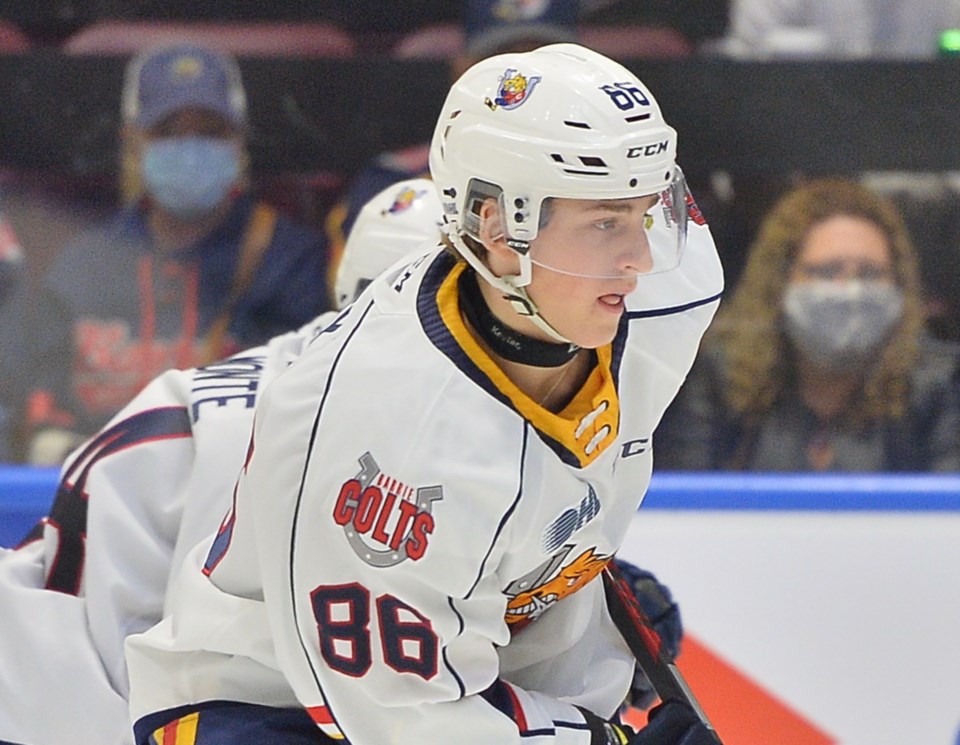We are in a lockdown again.
It’s difficult to tell when the latest round of restrictions will be relaxed or, perish the thought, tightened.
By the time a semblance of normal returns, it will have been two years since COVID-19 struck.
March 2020 was the demarcation point of the biggest public health crisis of our lifetime. The world of fun and games should be far down the list of priorities, but we really don’t know to what extent the pandemic’s permanent effects on athletes and the sports they play by the time – we can dream! – we get past this.
Locally, let's start with the local Ontario Hockey League team. The Colts, by the normal cycles junior hockey follows, should be a contending club this season. The team even started the season ranked in the top-10 nationally. They faded from that lofty perch once games were played, but there were signs before the holiday break the team could make some post-season noise as its roster began to solidify.
Swedish import Oskar Olausson was the real deal from the moment he arrived in Barrie and was a nice counterweight up front to another first-round NHL pick, defenseman Brandt Clarke. Instead, the news this week that the Swede sniper was sent to Oshawa, with other deals sure to follow before Monday’s deadline, means the Colts are giving up on seriously contending this season.
You must figure the COVID-calculus of going for it now with so much uncertainty played a role in the Colts deciding (again) to look to the future.
The focus now becomes the team’s younger players such as the two Beaus — Akey and Jelsma — and Hunter Haight. Haight and Jelsma are both hoping to be picked in this year’s NHL Draft, whenever it takes place, the original in-person July 7-8 dates in Montreal in danger as the league scrambles to reschedule games and finish the post-season by late June.
I consulted two NHL scouts this week. One runs his own independent multi-pronged scouting service; the other is in the employ of an Eastern Conference team. Both said that before the latest pullback, scouts were starting to get a sense of a pecking order forming among eligible OHLers despite last year’s cancelled season.
Both scouts also said the overall quality of this year’s draft crop was poor by normal standards.
It was the last point that made me think of the overall situation generally, and of Haight and Jelsma specifically. Both young forwards, who both turn 18 in April, should have had a full OHL season under their belt before this one started. Instead, Haight and Jelsma were part of a double cohort of Colts rookies that the team turned its focus to this week.
Haight will get drafted, but unless he goes deep in the second half, it won’t be in the first round, as was projected at the beginning of the season.
Jelsma has caught the attention of scouts for his tremendous skating, but other areas of his game are raw and there is some concern about his size.
The chats were not negative, but would these conversations have been more positive had Haight and Jelsma not lost a full season? Scouts call this “running out of runway,” when players have their development stunted one way or another and then either outgrow junior hockey or are displaced by younger players coming up.
All amateur athletes have paid a heavy price since March 2020. Aside from getting sick, there is nothing more cruel than having your formative years compromised by forces out of your control. Major junior hockey is just one example, but at least OHL clubs are still able to play.
The shutdown that took hold after the holiday break has halted lower levels of junior and minor hockey, as well as other amateur sports not deemed “elite,” with the provincial government specifically mentioning Olympic preparation being one of the criteria determining who can keep going.
That means university athletes are again shutdown at least until the end of the month. You’d have to go back to the fall of 2019 to find a USports/Ontario University Athletics sport not effected in some way by COVID. It’s now 2022.
Combined with the seriously compromised minor sports scene for the past two years, it makes you wonder how many young athletes have been robbed of a chance to some day grow into elite competitors.
Beyond that, the benefits of simply being active are also being affected. Are our kids developing unhealthy habits because there is little else to do beside sitting around the house with their heads stuck into their phones or watching TV?
I walked into one of the city’s recreations centres this past November to try and register my 11-year-old daughter in a few sports programs. She had grown antsy after a full school year of not being able to run cross-country or play volleyball. Skiing was halted after about a half-season when area hills were forced to close and our family didn’t take our annual trip to either Quebec or Alberta for bigger mountains and better snow.
We were stopped at the door, told to wait as the city sorted out the winter program and then go online-only to register.
I managed to get her into a few, but the “we’re-delayed-so-wait-for-further-information” emails started this week.
My inbox may as well be a metaphor for a swath of young Ontario kids stuck in sporting neutral.



